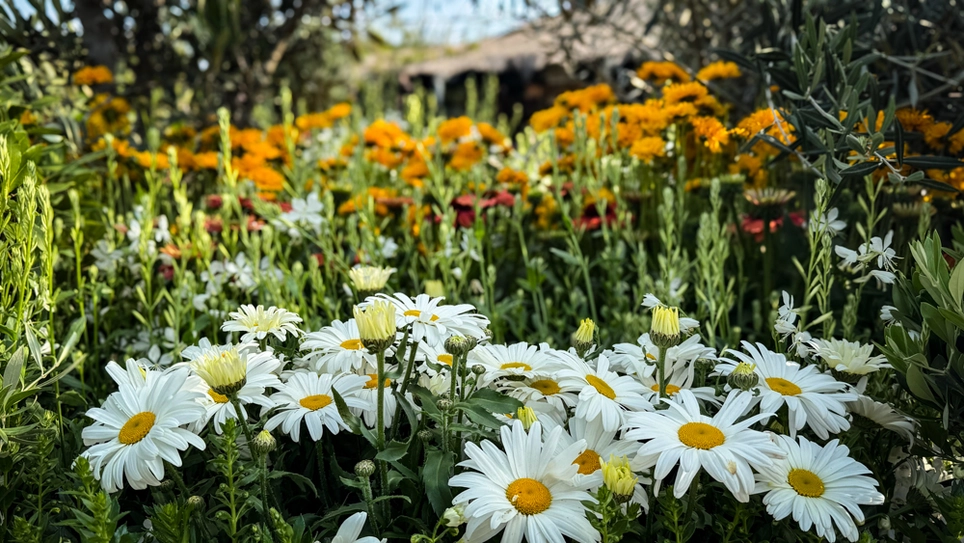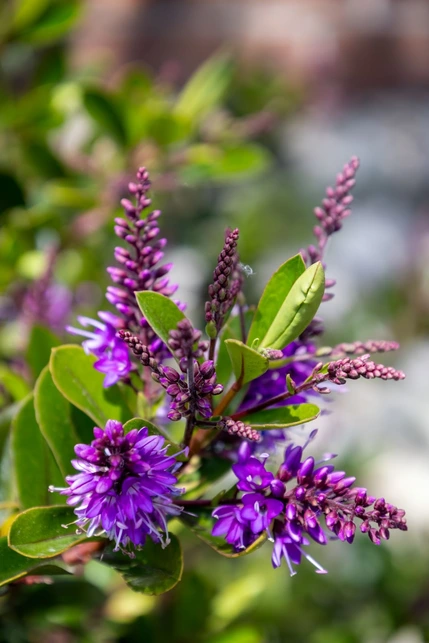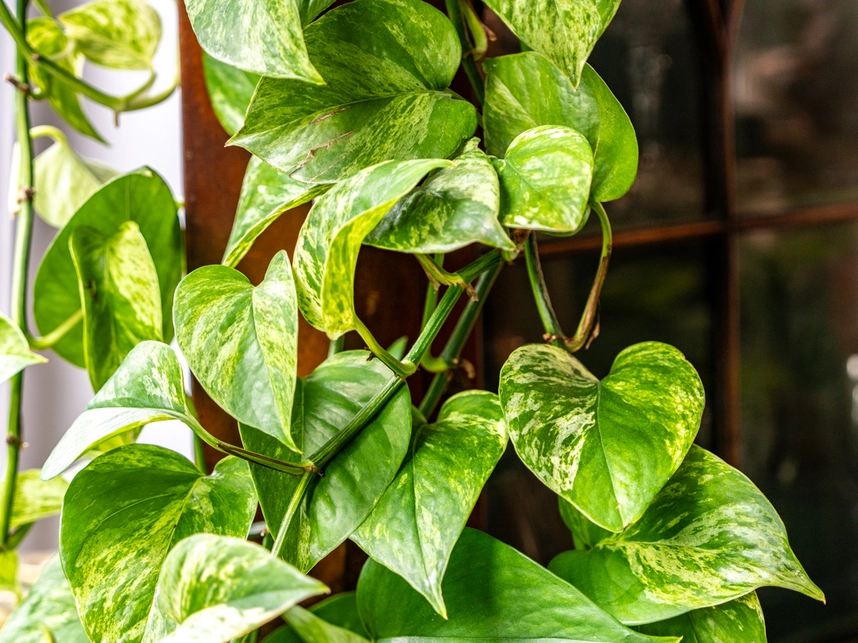
If you've admired those dancing white flowers with golden centres in the gardens at Hampstead Heath, or spotted masses of pink blooms brightening up a Highgate front garden in late summer, you've probably fallen for Japanese anemones. These charming, hardy perennial plants have been gracing British gardens since Victorian times, and they're having a serious moment in North London gardens right now.
At Boma, we've noticed more gardeners discovering what makes Japanese anemones—especially Anemone hupehensis, anemone hupehensis var., and anemone hybrida—special.
They bridge that tricky gap between summer and autumn flowering, thrive in partial shade (perfect for those narrow garden borders in London), and once established, these potted plants will naturalise and spread without taking over completely. Think of them as the polite houseguests of the buttercup family—hardy, elegant, and reliable in late summer and autumn.
Shop Japanese Anemones
The Japanese Connection
Most of the anemones we stock are Japanese types—Anemone hupehensis and A. × hybrida—which might sound exotic, but they've been perfectly at home in British gardens for over 150 years. Brought to the UK by plant hunter Robert Fortune, they originated in western China and first arrived here in the 1840s, quickly becoming essential plants for late-season colour. You'll find Japanese windflowers brightening the borders at Kenwood House, naturalised in the woodlands of Highgate Cemetery, and increasingly in smart contemporary gardens from Belsize Park to Muswell Hill.
Japanese anemones—also known as anemone hupehensis var. japonica or “japanese windflower”—start their show just as most summer perennials are flagging—usually late July in sheltered London spots—and keep going until the first proper frosts. That's up to three solid months of blooms when most gardens are starting to lose their colour and foliage.
More Than Just Pink and White
While the classic 'Honorine Jobert' with its pure white flowers on tall stems remains a bestseller (and for good reason—it's been winning hearts since 1858), modern breeding has brought spectacular variations. Our current collection includes everything from the ballet-tutu ruffles of 'Frilly Knickers' to the sophisticated two-toned petals of the Swan series.
The Swan varieties have been particularly popular with our Hampstead Garden Suburb customers. 'Wild Swan' produces lavender-blue backed white flowers from June right through to October—that’s five months of colour from a single anemone plant. 'Ruffled Swan' adds semi-double blooms that look almost peony-like, while 'Elfin Swan' stays compact enough for a large pot or container on a roof terrace. These hardy perennials offer reliable late summer and autumn displays, delighting pollinators and gardeners alike.
Our Star Performers
From our current collection, here are some standouts:
- The Swan series ('Wild Swan', 'Dreaming Swan', 'Dainty Swan', ‘Ruffled Swan’, 'Elfin Swan') offers sophisticated flowers with distinctive blue-backed petals. They're sterile hybrids, so all their energy goes into flowering rather than setting seed.
- ‘Prinz Heinrich’ bursts into life in autumn, delivering a riot of vivid pink blooms just when your garden needs it the most. A perfect border plant, it is equally captivating as a stand-alone feature.
- ‘Macane’ produces pure white blooms with bright yellow centres that bring light and freshness to borders. Its simple, elegant form pairs beautifully with bolder colours and adds a soft, natural feel to shaded or woodland-style gardens.
- 'Royal Candy' brings proper magenta-pink to the party—bold without being brash. It partners beautifully with silver-leaved plants.
- 'Mont-Rose' is a reliable classic with clear pink semi-double flowers. It's been around since the 1950s because it just works.
- 'Frilly Knickers' does exactly what it says on the tin—masses of frilled double pink flowers that look like they're wearing tutus.
- 'Whirlwind' offers semi-double white flowers with a green tinge. More interesting than plain white but still elegant.
- 'Splendens' is an old variety with deep rose-pink flowers. Less commonly seen but worth seeking out for its rich colour.
Perfect for London's Tricky Spots
Here's what makes Japanese anemones so well-suited for North London gardens: they genuinely prefer dappled shade or partial shade rather than baking in full sun. The narrow passage down the side of your Victorian terrace? The deep shade under an apple tree where dead leaves collect? Anemone hupehensis and hybrids will thrive there. Their dark green foliage adds neat structure, and their tall stems, sometimes up to 150cm, perform with minimal staking.
They're also unfussy about soil. While they prefer a moist, humus-rich soil improved with well rotted garden compost or mulch, they cope well with London clay as long as it isn’t waterlogged in winter.
Add organic compost at planting, water new young plants well in their first summer, and these hardy perennials will reward you with robust growth and reliable flowering every year. Once established (usually after one year), they're surprisingly tolerant of periods of drought—perfect for busy urban gardeners.
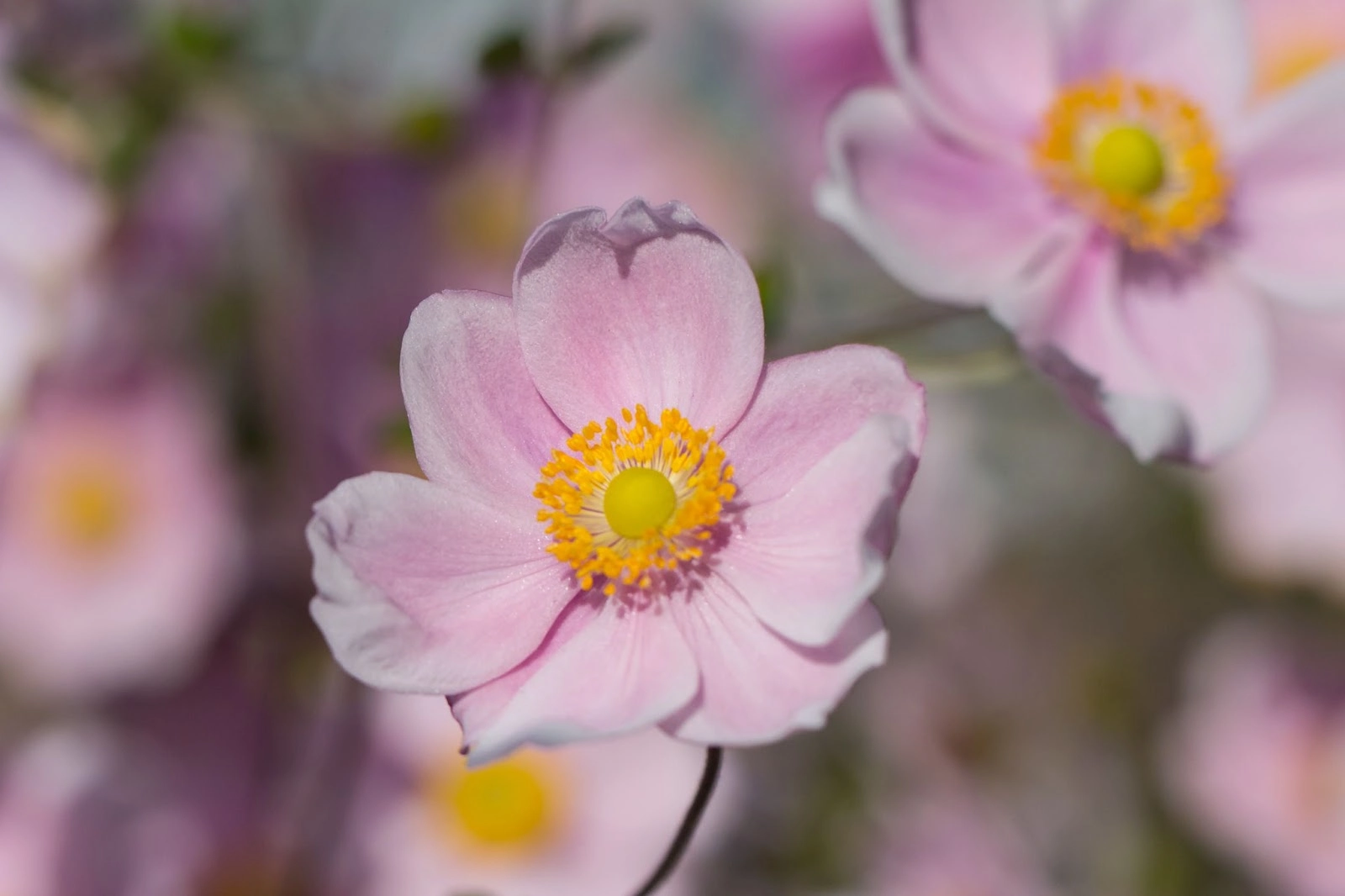
Spring Surprises Too
Not all anemones are late-summer or autumn performers. The De Caen types and varieties like 'Harmony' flower in early spring, giving your garden jewel-bright blooms as early as March and lasting well into late spring (sometimes up to May). These spring-flowering anemones grow from corms—flattened bulbs that you plant in autumn for the following year’s display.
Try ‘Rose Shades’ for delicate pink flowers to mix with early tulips or our bi-colour De Caen mix for a carpet of reds, purples, and whites with dramatic dark centres. Plant in drifts beneath shrubs and trees, in deep shade or moist borders, or let seedlings naturalise in grassy sunny patches for a vibrant show.
Where to Use Them in Your Garden
- Woodland-style planting: Combine Japanese Anemones with ferns, hostas, and astilbes for that relaxed woodland look that's so popular in Highgate. They're particularly stunning with Japanese maples.
- Modern mixed borders: The cleaner forms like 'Honorine Jobert' and 'Whirlwind' work brilliantly in contemporary schemes. Try them with ornamental grasses and late-flowering sedums.
- Cutting gardens: Anemones make exceptional cut flowers, lasting up to two weeks in a vase. 'Queen Charlotte' with its semi-double pink blooms is particularly good for arrangements.
- Containers: The compact varieties like 'Fantasy Ariel' and 'Elfin Swan' work well in large pots. Perfect for brightening up a shady patio or those basement areas that only get reflected light.
- Under trees and shrubs: Let them naturalise under established plantings. They'll spread steadily via underground rhizomes, creating natural drifts without becoming thuggish.
Getting Them Established
The key with Japanese Anemones is patience. They sulk for their first year while they're getting their roots down (they can go down a metre or more), then they'll start to perform in year two, and by year three you'll wonder how you ever gardened without them.
Plant them in spring or early autumn. If you're planting in clay, dig a hole twice the size of the rootball and mix in plenty of compost. Water them well in their first summer, then you can largely leave them alone. They don't need staking despite their height, and they're largely pest and disease-free.
The spring-flowering types are even easier—just plant the corms 5cm deep in autumn and forget about them until they surprise you in spring.
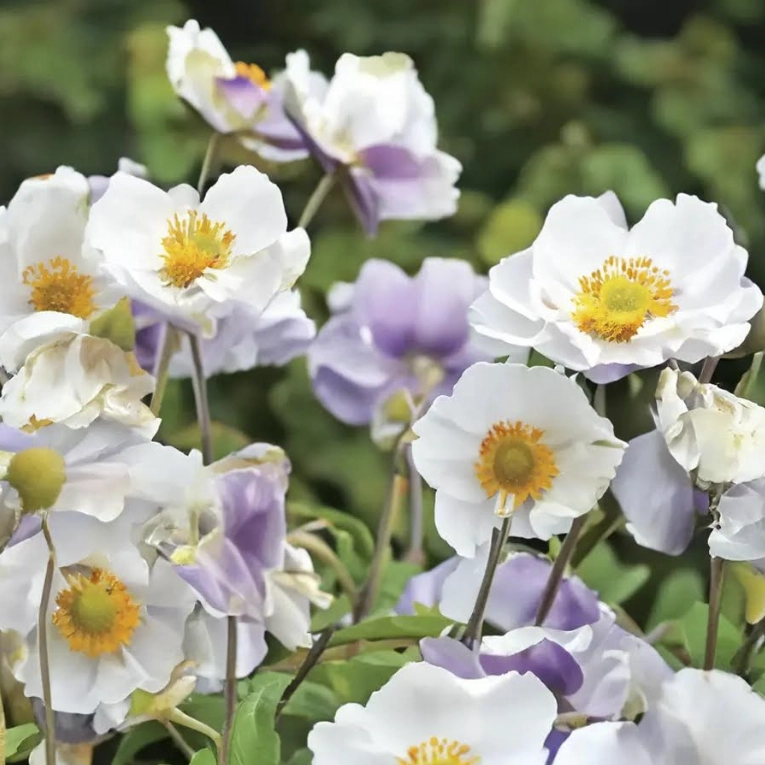
Making the Most of Them
A spring feed with a balanced fertiliser keeps them flowering strongly. Deadheading isn't essential but it does extend the flowering period. Leave the seedheads on 'Honorine Jobert' if you want them to self-seed—the offspring are usually true to type.
In late autumn, you can cut the stems back to ground level or leave them for winter structure and wildlife. The seedheads look particularly good with frost on them, and birds appreciate the seeds.
Division is the best way to propagate them, ideally in spring just as growth starts. Even small pieces of root will grow, which is handy if you want to spread them around the garden or share with neighbours.
Not Sure Which Varieties to Choose?
Drop by our Kentish Town garden centre where we've got our Anemone collection displayed by flowering time and height. Our team can advise on which varieties work best for your specific conditions—and if you're planning a larger planting scheme, we offer a design and planting service that takes the guesswork out of creating beautiful combinations.
We deliver throughout the M25, so if you're planning a drift of Anemones across a large border, we can bring them straight to your door. Right now, we're offering 10% off when you buy five or more Anemones—perfect timing for establishing that autumn display you've been planning.
Visit us this weekend to see our full range, including some unusual varieties you won't find in the average garden centre. After all, there's something rather satisfying about having plants in your garden that make the neighbours stop and ask, "What is that gorgeous thing?"
Visit Us | Contact Us | Shop Japanese Anemones
Frequently Asked Questions
Do Japanese Anemones spread aggressively like Japanese Knotweed?
Not at all. While Japanese Anemones do spread via underground rhizomes once established, they're easily controlled and nothing like knotweed. They'll form nice colonies over time but won't take over your garden. Any unwanted shoots can be easily pulled up or transplanted elsewhere.
Which Anemones flower the longest in London gardens?
The Swan series, particularly 'Wild Swan', gives you the longest display—from June through to October frosts. For spring types, the De Caen varieties flower for 6-8 weeks if kept cool and moist.
Can I grow Anemones in pots on my Islington roof terrace?
Absolutely. Choose compact varieties like 'Elfin Swan', 'Fantasy Ariel', or 'Harmony'. Use large containers (at least 40cm diameter), soil-based compost, and ensure good drainage. They'll need more watering than ground-planted ones but will thrive.
My garden in Finchley only gets two hours of direct sun—will Anemones work?
Perfect conditions for Japanese Anemones! They actually prefer partial shade and will flower well with just morning sun or dappled light. Full shade might reduce flowering slightly, but they'll still perform better than most plants in those conditions.
When should I plant Anemone corms for spring flowers?
Plant spring-flowering Anemone corms in September through November. In London's mild climate, you can plant as late as December and still get spring flowers, though earlier planting gives stronger displays.
Do Anemones attract bees and pollinators?
Yes, particularly the single and semi-double varieties. The simple bowl-shaped flowers are perfect for bees and hoverflies. Late-flowering Japanese Anemones are especially valuable as they provide nectar when many other flowers have finished.
Are Anemones deer and rabbit resistant?
Generally yes. Anemones contain compounds that make them unpalatable to deer and rabbits. While no plant is 100% proof against hungry animals, Anemones are usually left alone—handy for gardens backing onto Hampstead Heath or Highgate Wood.
How tall do Japanese Anemones grow, and do they need staking?
Most grow 60-120cm tall depending on variety ('Elfin Swan' stays around 45cm, while 'Honorine Jobert' can reach 150cm). Despite their height, they rarely need staking thanks to strong, wiry stems. Only stake if your garden is particularly windy.
Can I plant Anemones under my walnut tree where nothing else grows?
Japanese Anemones are one of the few plants that tolerate juglone (the chemical walnuts produce), making them perfect for this challenging spot. They're similarly good under yew trees.
What's the difference between 'Honorine Jobert' and other white Anemones at Boma?
'Honorine Jobert' is the classic single white with golden stamens—reliable and elegant since 1858. 'Whirlwind' has semi-double white flowers with a green tinge, while the Swan varieties have white flowers with distinctive blue-purple backs to the petals. Come see them side by side at our centre to spot the differences.





